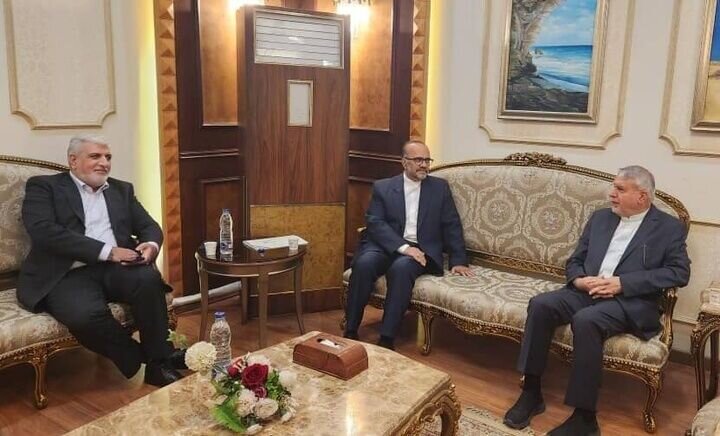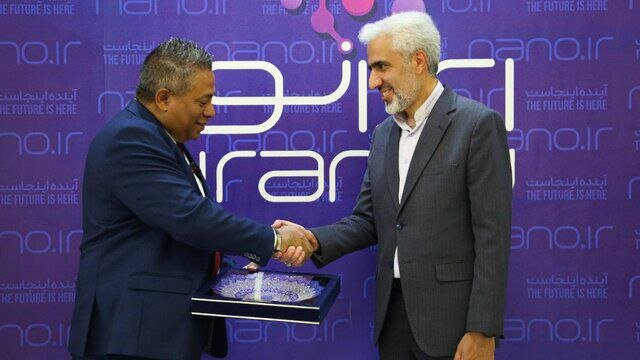Iran’s Bold Fertility Campaign: A Controversial Ad Aims to Boost Population Growth
An advertisement displayed in Tehran’s metro cars has sparked significant controversy, as many perceive it as a strange attempt to criticize birth control measures amid Iran’s efforts to address declining population growth. This ad has raised questions about the government’s stance on reproductive health and family planning.
The ad featured the caption, “The nurse who healed my mother’s wounds, you are a great lady,” over an image that some observers initially interpreted as a crumpled condom over a phallic shape. Below the image, the text read: “The nurse who was never born” and “Giving an opportunity to future heroes to be born.” This message was perceived by many as an anti-condom campaign promoted by the hardline-dominated municipality.
Social media reactions to the ad have been mixed. A user on X, @nah__r, questioned, “Looks like they have seriously used an image of a broken condom in the metro to campaign for childbirth. Since when have they become so open-minded?” The ad’s controversial nature has highlighted the ongoing debate over reproductive rights in Iran.
Dr. Shahram Kordasti, a London-based Iranian hemato-oncologist, commented on the misleading nature of the ad, stating, “This ad is dangerously misleading! Condom use is not just for preventing pregnancy; it plays a much more vital role in maintaining sexual health and preventing sexually transmitted diseases. Incomplete information is harmful and a sign of the utter irresponsibility of its publishers.”
Upon further investigation, some social media users clarified that the intended message of the graphic was to depict a hospital bed with a bedsheet and not a condom. This miscommunication reflects a design misfire that has led to widespread confusion.
The ad was part of a broader initiative to raise awareness about a potential shortage of critical workforce sectors, such as firefighters, emergency responders, and border guards, if Iran’s birth rate continues to decline. Other versions of the advertisement depicted the same shape with various alterations, such as bullet holes, burns, and frost, emphasizing the heroism of “unborn” workers.
One user, @adameaval, stated, “I realized that the opaque covering was supposed to represent hospital sheets, not condoms after I investigated the ad,” attributing the confusion to the campaign’s designers.
Historically, Iran’s approach to reproductive health has evolved significantly. The nation launched its first condom factory in 1987 under the Ministry of Health as part of a strategy to manage rapid population growth, which had exceeded five percent in the early 1980s. During the 1990s, Iran’s family planning program was lauded as one of the most effective globally, providing free contraceptives and promoting smaller families.
However, in response to a steep decline in birth rates over the past decade, authorities have reversed this approach. The latest official statistics reveal that the population growth rate has dropped to just 0.7 percent. In 2022, the Health Ministry prohibited the free distribution of contraceptives and mandated prescriptions for purchases. Despite this, demand for contraceptives remains high, with illegally imported products available through online shops and select pharmacies.
At the same time, the government has intensified crackdowns on abortion. In Iran, abortions are only permitted within the first four months of pregnancy under specific circumstances, such as severe fetal abnormalities or when the mother’s life is at risk. Additionally, screening kits for congenital anomalies that might promote abortions have been banned.
In a bid to encourage childbirth, the Iranian government is now offering various financial incentives, including bonuses for childbirth, free land, and extended maternity leave. Recently, the government expanded insurance coverage for infertile couples, announcing on April 27 that the Health Insurance Organization would cover 90% of costs for IVF and ICSI procedures in public hospitals and 70% in private facilities.
Mohammad-Jafar Ghaempanah, the executive deputy to President Masoud Pezeshkian, expressed concern during a National Population Day event on May 19. He warned that a recent 7.4 percent drop in births compared to the previous year is a “serious alarm.” He emphasized that reversing this trend would necessitate “economic stability, improved livelihoods, and job security.”
However, Iran’s struggling economy complicates these objectives. The Misery Index—defined as the combined rate of unemployment and inflation—has surged from 19.3 percent in 2016 to 40.3 percent in 2024, with inflation consistently above 32.5 percent for several years.
Sociologist Saeed Payvandi, speaking from Paris on Iran International TV, stated, “A government that hasn’t been able to provide welfare or at least the minimum of it for its current population is not well-positioned ethically to tell its people to have more children.” This highlights the broader socio-economic challenges facing Iran as it grapples with demographic changes and public health messaging.
As the conversation around reproductive health and population growth continues, it is clear that the issues at hand are complex and multifaceted, requiring thoughtful engagement from both the government and society. The recent ad controversy serves as a reminder of the critical need for accurate information and responsible communication in matters of public health.






